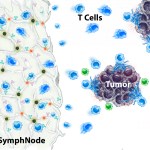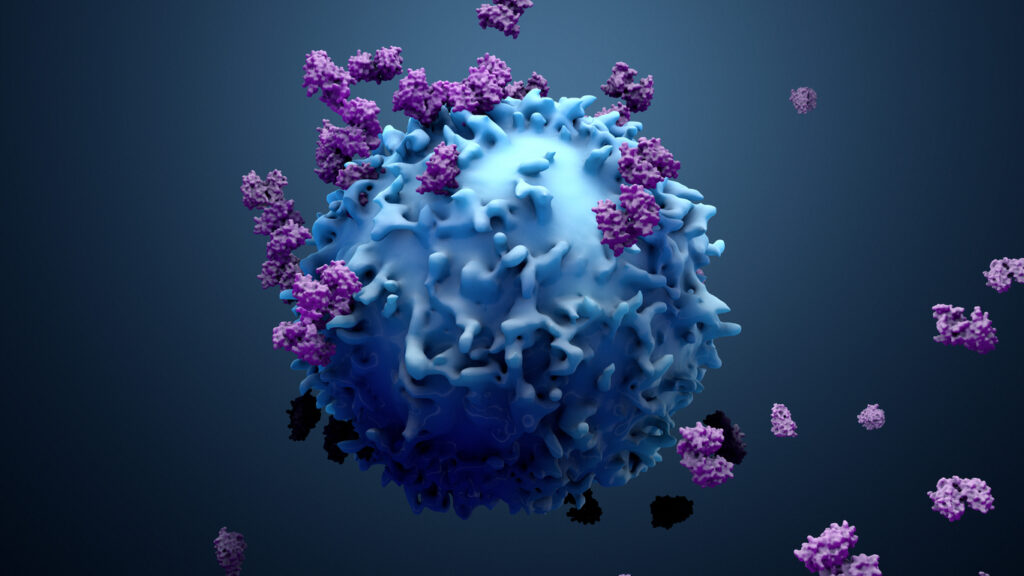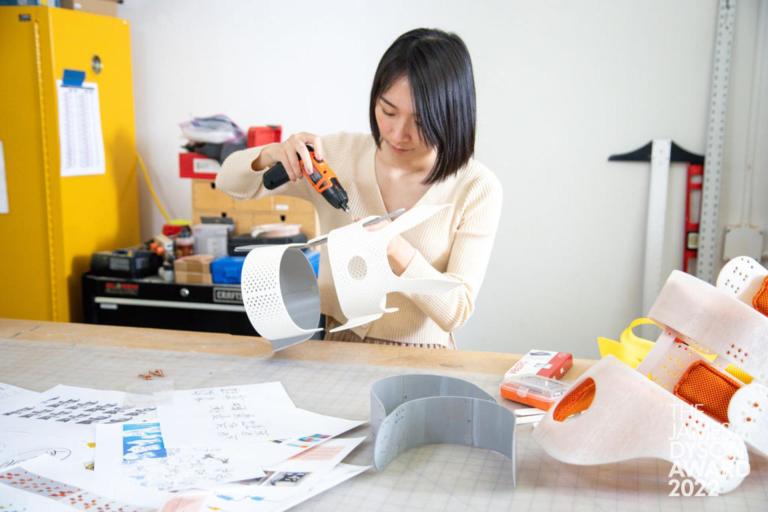A small and sponge-like implantable device strengthened the body’s ability to fight cancer cells — and prevent them from coming back, according to a recent study.
Scientists at UCLA created this device to help solve the problem of tumors that resist treatment due to regulatory T cells. These cells are involved in protecting healthy tissues, which means deactivating them entirely would cause autoimmune conditions that harm the colon, liver, heart, and other organs.
That’s where this device, called the SymphNode, comes in. It’s a tiny, biodegradable sponge that resembles a lymph node and is made from alginate, the polymer commonly used to thicken pudding, jam, and canned products.
Per a press release from UCLA, the device, described as “the size of a pencil eraser,” was shown to help fight cancer in mice by both boosting their bodies’ tumor-fighting responses and keeping cancers from returning.
The goal is to use this device to “keep regulatory T cells in check only in the area around a tumor while summoning and strengthening tumor-fighting cells.” Meaning, it’s aimed to be the best of both worlds.
Results from the study, published in Nature Biomedical Engineering in December, were “encouraging,” the press release notes. They showed the device could “drive tumors into remission, eliminate metastasis, prevent the growth of new tumors, and result in longer survival in mice.”

To test the device, the researchers placed the SymphNode in mouse models of breast cancer. They found the tumors got smaller in 80% of the mice with the device and it also prevented cancer from spreading in 100% of them. They also tested it on mice with melanoma: It shrank tumors in 100% of the treated mice — and reduced tumors to “undetectable levels” in more than 40% of the subjects.
On the other hand, the group of mice in the untreated control group all died within weeks, with the cancer spreading to the brain and lymph nodes. The life span was “significantly extended” for treated mice with both melanoma and breast cancer, and sometimes even doubled compared to the untreated mice.
Furthermore, the device was also shown to be effective at fighting more than one tumor at a time. Researchers found that even when the SymphNode was placed next to a breast cancer tumor, it also “halted the growth” of a tumor in different spot of the body.
To see how the device might reduce the risk of returning cancer, researchers injected a second tumor 100 days after the first one in the treated mice with breast cancer. They found these mice “resisted the growth,” which indicates that “the technology may decrease the risk of cancer returning,” the press release explains.
According to co-corresponding author Manish Butte, UCLA’s E. Richard Stiehm Professor of Pediatric Allergy, Immunology and Rheumatology, the resistance is from the immune cells being “trained” to fight the original tumor. Therefore, they can identify the same cancer if it returns later.
Now that the results have shown to help mice, the researchers are aiming to make SymphNode available to humans.
“Getting rid of regulatory T cells within the tumor seems to be transformative,” Butte said. “Every solid tumor is crammed with these cells, and they’re why 91% of cancer deaths occur from solid tumors. They’re probably limiting our ability to cure the cancer in the first place.”
Related: It’s World Cancer Day: Prevention Advice From Medical Experts — Exclusive












